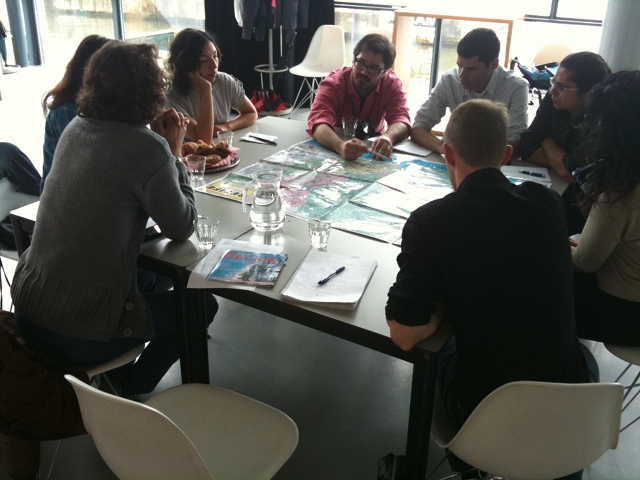ARCAM organized a workshop with Robson Canuto da Silva (State of Pernambuco), Cristiano Borba do Nascimento (Fundaj) and George Alex Da Guia (Iphan) who participated in the Course on Urban Heritage Strategies organized by IHS and the Netherlands Cultural Heritage Agency.
ARCAM invited some Dutch architects, urban planners and researchers to get an introduction on Recife and discuss the state of affairs in urban planning in Amsterdam and Recife and more specifically the case that Robson, Cristiano and George are working on, namely the 'revitalisation of the historical inner city of Recife'. Special guests are Martine de Wit (DUS Architects), Johan Rasmussen (Cities), Jaap Klarenbeek (Studio Rosa), Karla Gutierrez (DRO) and Zineb Seghrouchni (Okra/Studio Papaver).
Recife is the fifth biggest city of Brasil and one of the oldest capitals. Originally Recife was the port of Olinda, a settlement founded by the Portuguese. In 1630 it was conquered by the Dutch who firmly 'founded' Recife by adding 'Mauritsstad' which was connected to Bairro do Recife by the first bridge of the Americas and has a Dutch urban outlay that is still visible today.
Nowadays this part of the old inner city is very crowded between 7am and 5pm with all kinds of commercial activities. But because people don't live there, after 5pm it gets quiet and dangerous.
The case that Robson, Cristiano and George are working on is how to revitalize the area to make it more attractive and safe by respecting and even articulating the heritage as a value. They focus on the crossing of the Av. Dantas Barreto and the Av. Guararapes. The municipality wants to attract the creative industry to take root in this district.
Overall it is important to note that Recife does not have one overarching master plan for the development of the city, but that developments are guided by zoning plans. Most of the land is privately owned, what makes it difficult for the government to implement a coherent vision. At the same time one could say this makes the city very flexible since private investors can quickly respond to demands from the market.
Some remarks, recommendations and questions mentioned in the workshop are:
- Use the fabric shops and haberdasherries to make a connection with the creative people (like fashion designers) that could be interested to live/have their studios in the area. Start from the existing activities!
- Suggest architectural interventions to make living above the shops possible (also a challenge in Amsterdam and Utrecht!)
- Think about how preservation of heritage and tourism are related. Is there a strong link and could tourism be used to attract investors in heritage?
- The most special feature of this area in Recife is that it is surrounded by water. Highlight this aspect by showing ways in which this area could open up more to the water. (Amsterdam is also reorienting towards the water!)
- Amsterdam could learn from Recife how to 'plan' with less means. More collaboration with private parties, letting loose control, create space for self initiative and work on a smaller scale could be suggestions.
Flora van Gaalen





Geen opmerkingen:
Een reactie posten